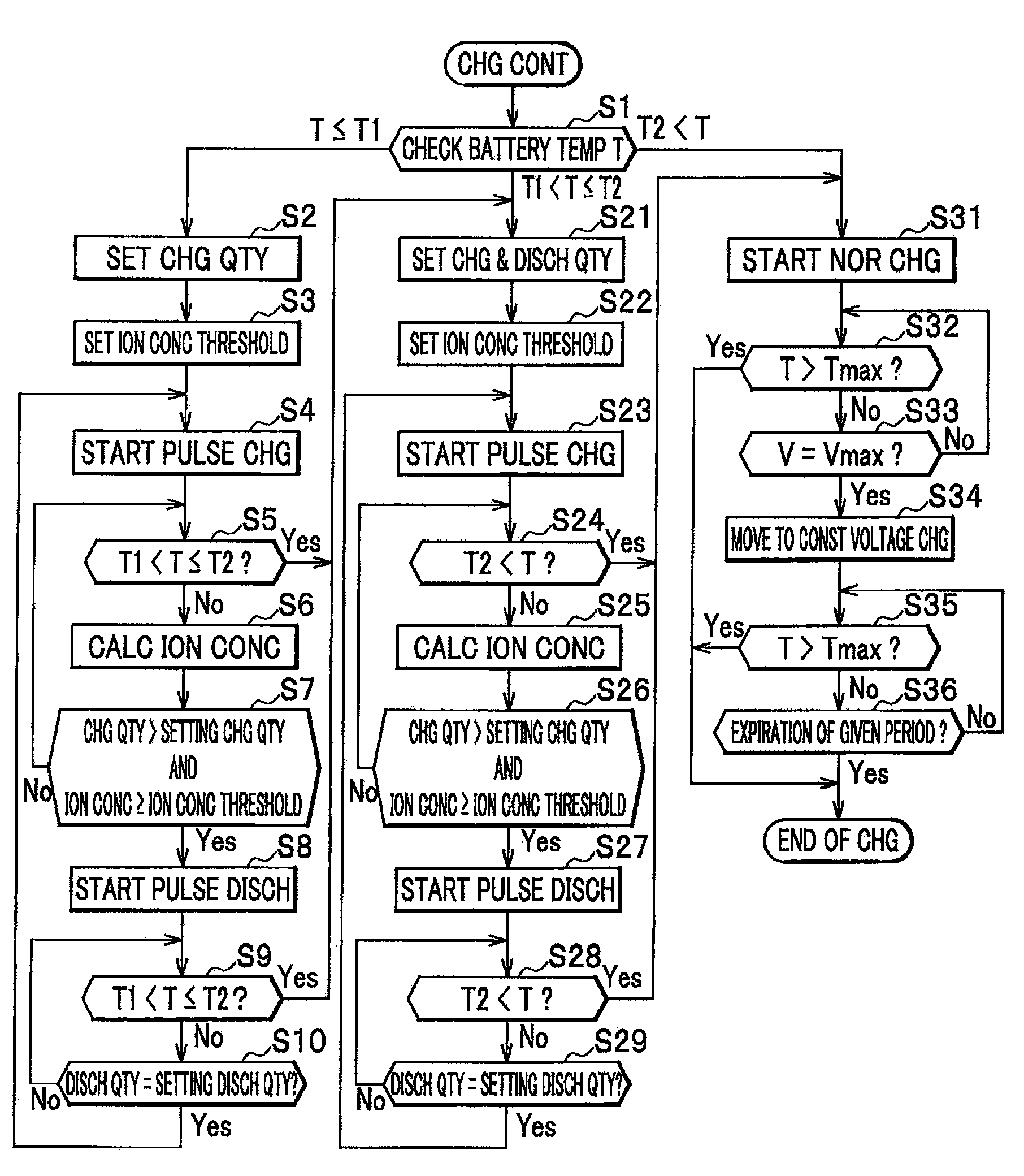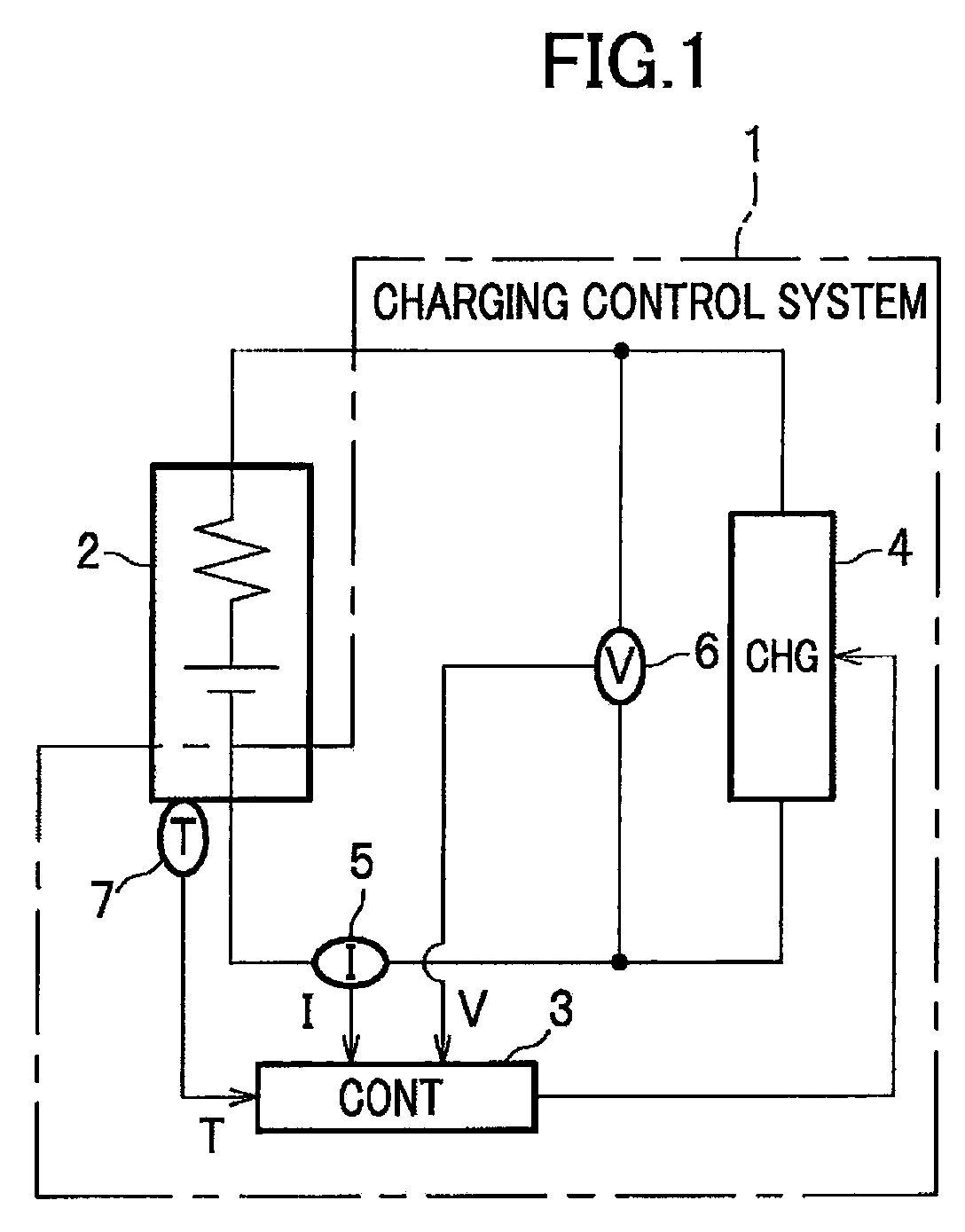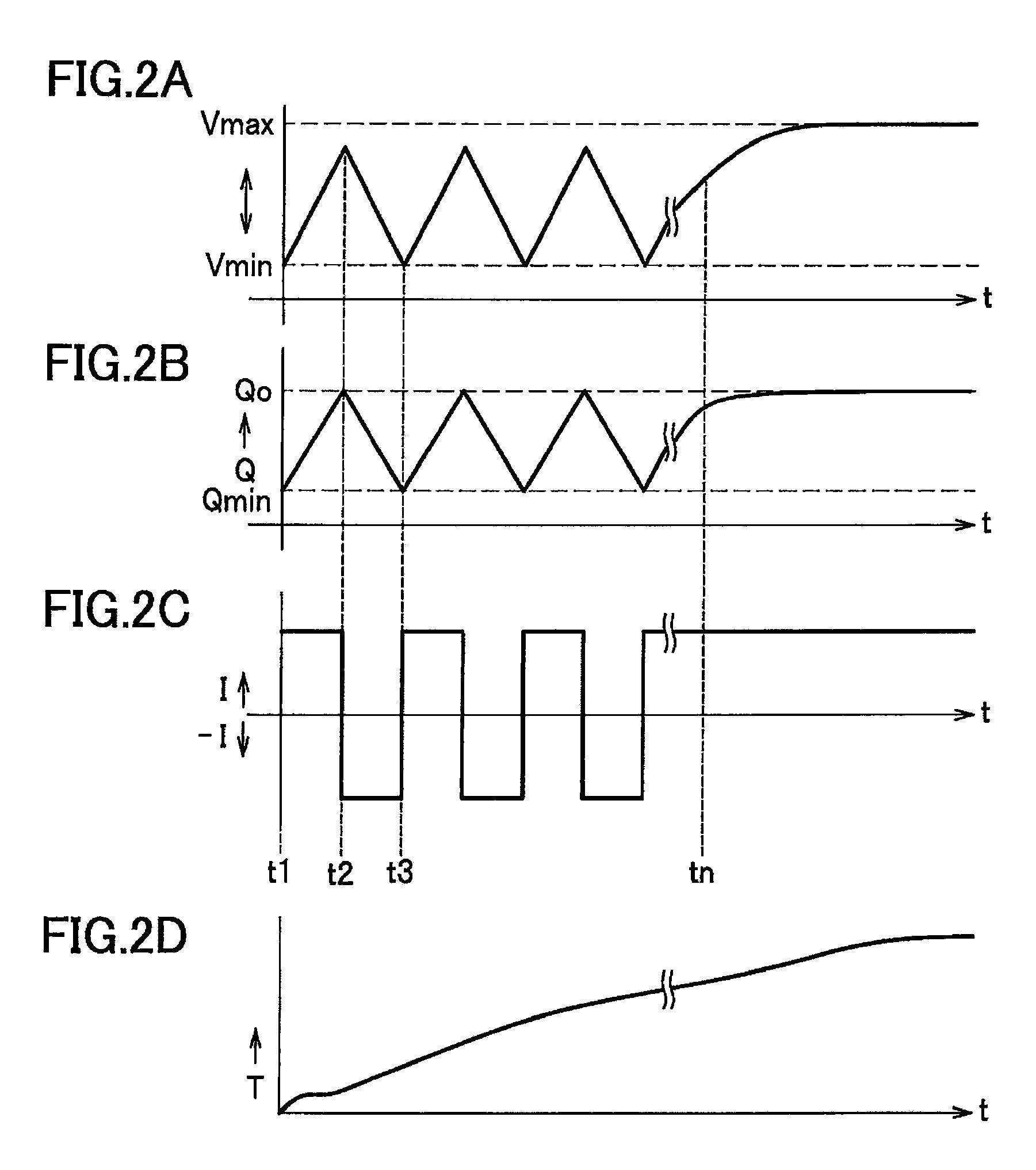Method of charging battery based on calcualtion of an ion concentration of a solid active material and battery charging control system
a technology of solid active materials and battery charging, which is applied in the direction of electric vehicles, transportation and packaging, electric power, etc., can solve the problems of shortened battery life, battery electrode damage before the battery voltage reaches the upper limit, and the charging method using external heating is undesirable in the consideration of vehicle layout, etc., to avoid deterioration of the battery
- Summary
- Abstract
- Description
- Claims
- Application Information
AI Technical Summary
Benefits of technology
Problems solved by technology
Method used
Image
Examples
embodiment
[0042]In the method of charging the battery of an embodiment, an ion concentration at a surface of an active material of an electrode is considered as a factor relating to damage of the electrode, and thus pulse widths are determined on the basis of an ion concentration at a surface of electrodes real-timely estimated. This enables the charging and discharging control with an appropriate heating of the battery without damage to the electrodes during heating the battery by the pulse charging and discharging. Hereinbelow will be described the method of charging the battery in a case where a lithium base battery is exemplified.
[0043]FIG. 1 is a circuit diagram of a battery charging control system configured to perform the method of charging a battery according to the embodiment of the present invention. The charging control system 1 shown in FIG. 1, mounted on, for example, a hybrid vehicle and an electric vehicle, is used to charge a battery 2 for supplying an electric power to a load...
PUM
 Login to View More
Login to View More Abstract
Description
Claims
Application Information
 Login to View More
Login to View More - R&D
- Intellectual Property
- Life Sciences
- Materials
- Tech Scout
- Unparalleled Data Quality
- Higher Quality Content
- 60% Fewer Hallucinations
Browse by: Latest US Patents, China's latest patents, Technical Efficacy Thesaurus, Application Domain, Technology Topic, Popular Technical Reports.
© 2025 PatSnap. All rights reserved.Legal|Privacy policy|Modern Slavery Act Transparency Statement|Sitemap|About US| Contact US: help@patsnap.com



